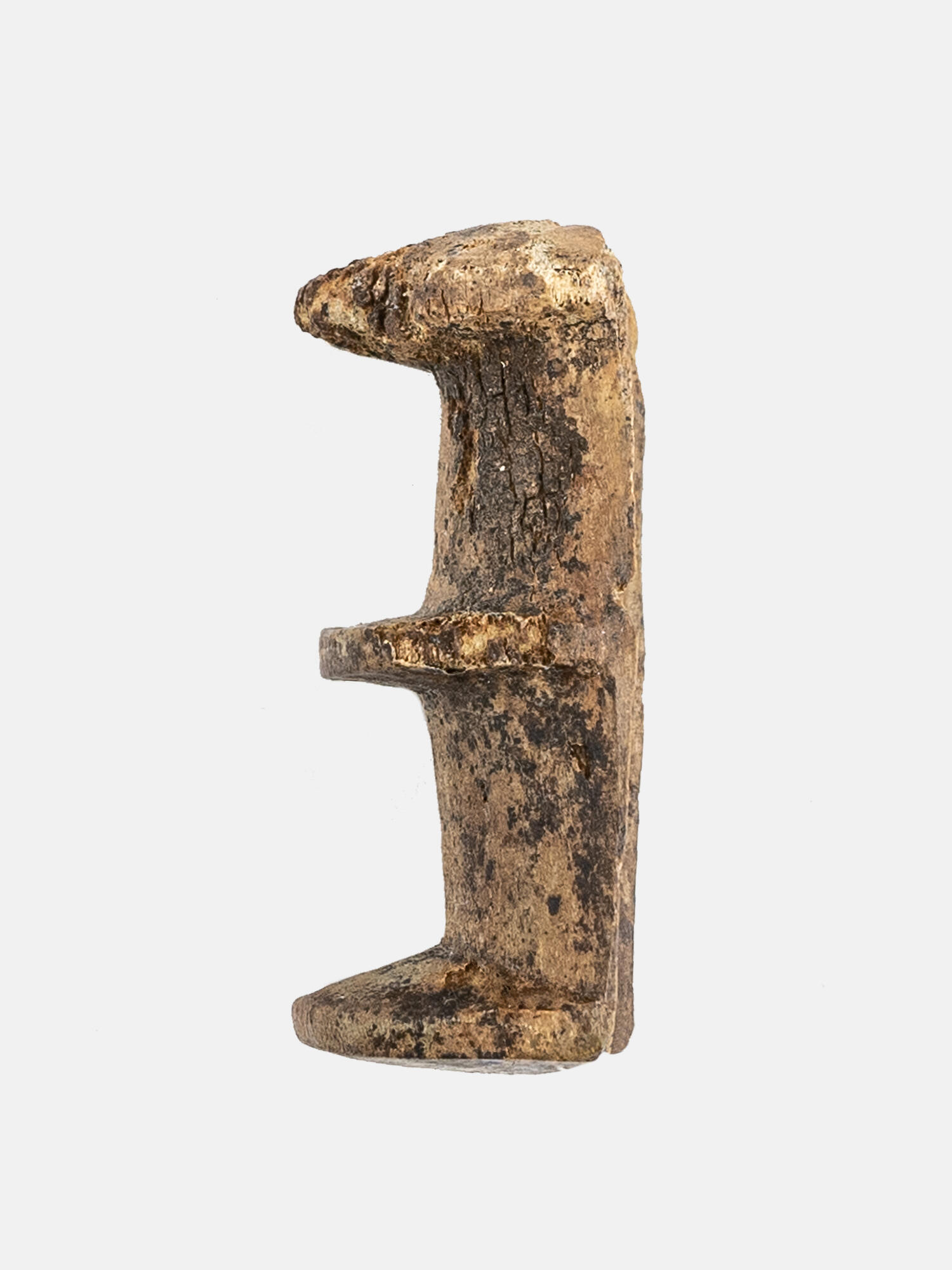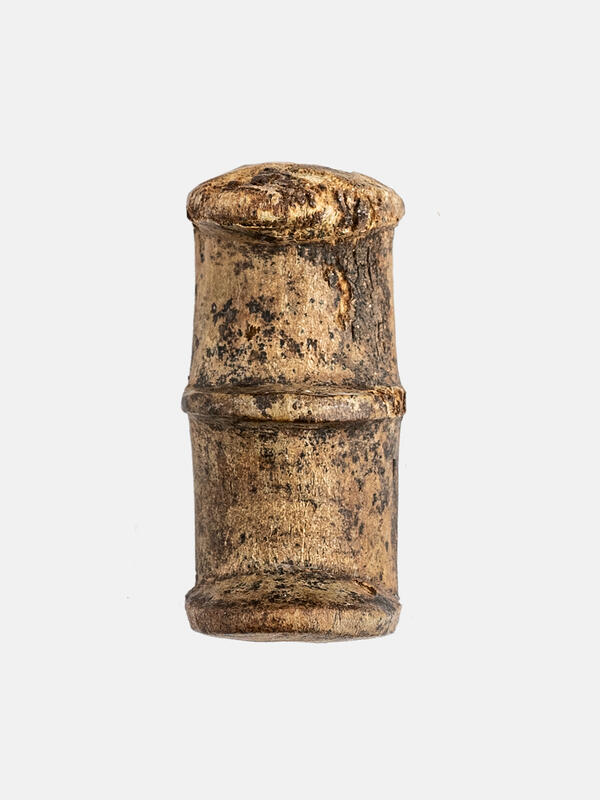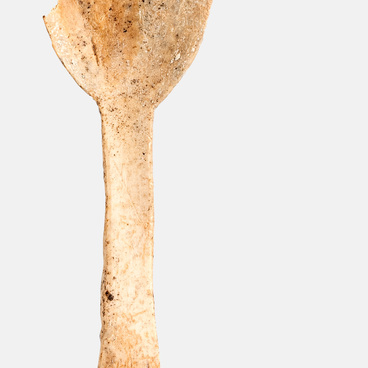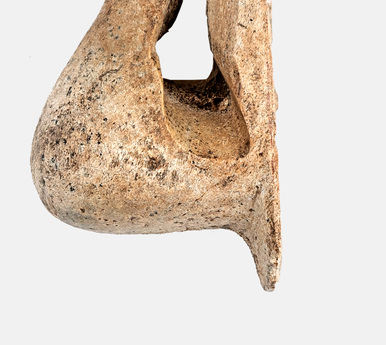The Stepnoye-1 burial ground is located in the Plastovsky District of the Chelyabinsk Region on the left bank of the Uy River near the present-day settlement of Stepnoye. The burial ground occupies a vast territory of about 2,000 square meters. The horn items were discovered during the archaeological excavations of mound 4 by the expedition of the Museum-Reserve “Arkaim” led by Dmitry Zdanovich. They are considered to be parts of a compound bow. They were located in different parts of the pit. This may be due to the looting of the pit or a peculiarity of the burial rite (special ritual destruction of an object in burials).
The supposed “arrow shelf” of the bow was located at the eastern side wall of the pit. It is a horn piece of elongated rectangular shape, segmental in cross-section. Across the front part, along the edges and in the center, there are three protrusions of semicircular shape with pronounced ridges. The back side has a longitudinal semicircular groove. The base has a longitudinal grooved shape.
Dmitry Zdanovich suggests that this detail was probably used as a bed for the bowstring at the lower shoulder of the bow. In addition, it served to permanently secure one end of the bowstring. The bow proved to be successful during the experimental shots, because the placement of the rectangular part on the lower end provided more elasticity and efficiency of the bending of the lower shoulder of the bow. The asymmetry of the weapon, compensated by the balance of the horn parts, could give the lower shoulder the combat ergonomics that allowed the warrior to fire the reinforced bow while in the back of a battle wagon.
A large number of arrowheads and their molds found
among settlement and burial materials testifies to the key importance of the
bow in the weaponry of the Sintashta culture. This thesis is confirmed by the
finds of horn parts of compound bows found in three Sintashta burial complexes.
The design of the Sintashta bow is of special interest as a possible part of
the chariot complex of the Sintashta culture, including the remains of
chariots, burials of harnessed horses, presence of psalia and means of combat.





